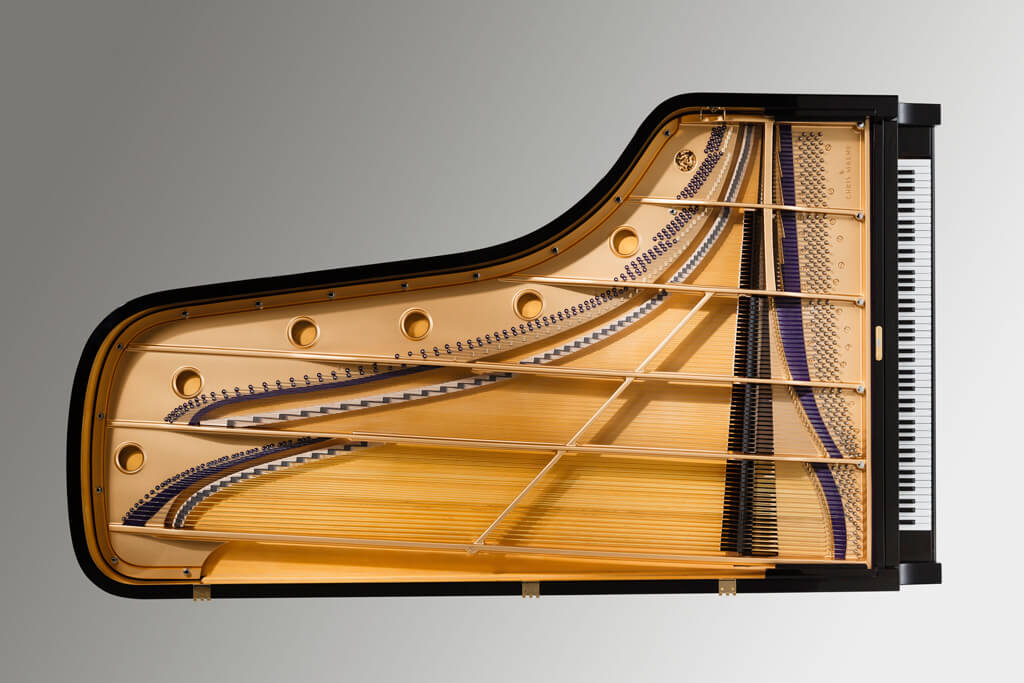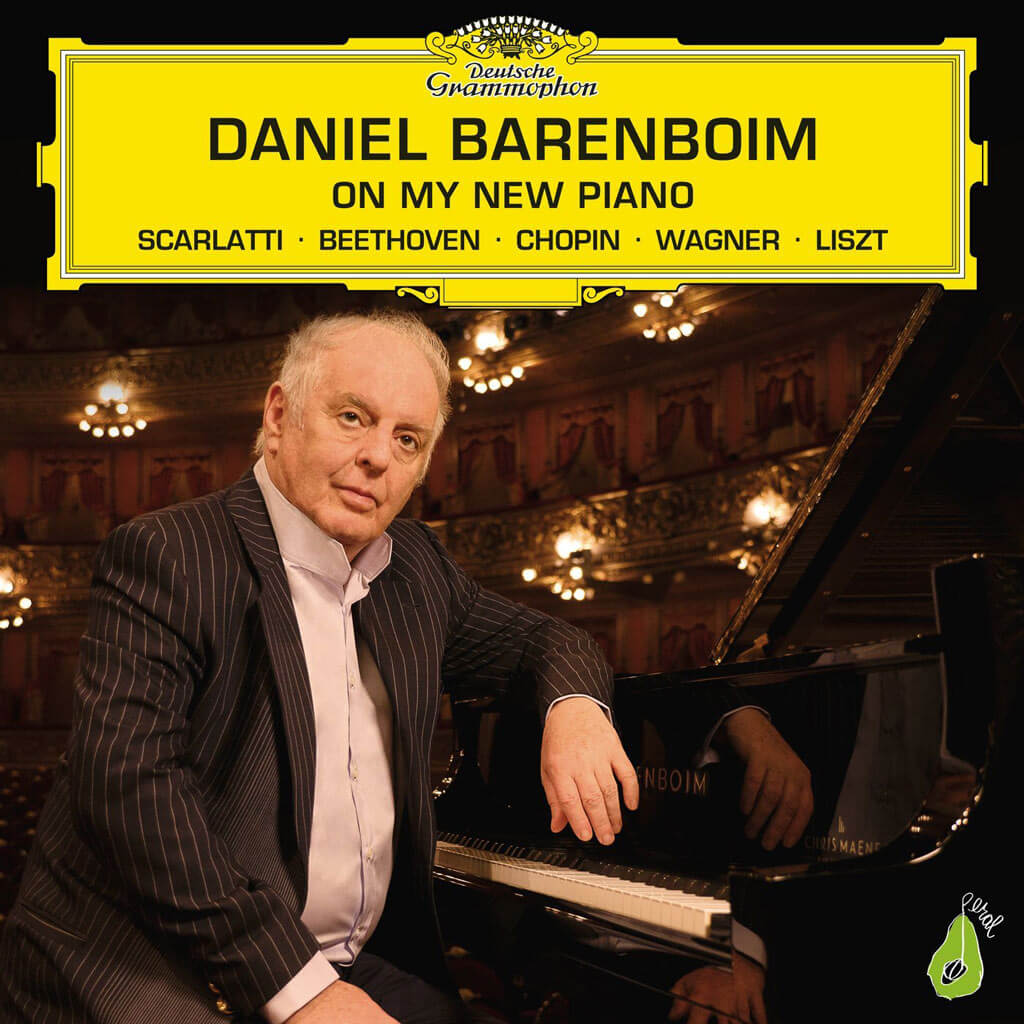
Steinway instruments, which have been the gold standard in pianos for a very long time and are nearly always the first choice of concert artists, have proven to be nearly ideal for repertoire from Bach to Elliot Carter. Daniel Barenboim was one of those artists, until he had the opportunity in 2011 to play an instrument originally owned by Franz Liszt.
Struck by the “transparent sound quality and distinguishable colour registers” of this 200-year-old instrument, Barenboim asked the Steinway engineers if they could duplicate these qualities on a modern instrument; they confessed that they could not. That sent Barenboim to the instrument maker Chris Maene in West Flanders (Belgium). After several years of development, Maene came up with exactly what Barenboim was looking for and on this new CD we can hear the instrument that so excited Barenboim.
But what exactly makes the new Maene-Barenboim piano physically different from your average Steinway? From the outside, it looks pretty much the same, but inside there is a world of difference. Mark Brown of The Guardian has looked inside and offered these observations:
[The instrument] has straight parallel strings instead of the diagonal-crossed ones of a contemporary piano. The wooden soundboard veins go in different directions. The bridges, ribs and bracings are specially designed and the hammers and strings (yellow brass rather than red brass) have been repositioned.
While the repertoire on the CD has obviously been selected to show off the uniqueness of the new piano, it is worth noting that it is all music that Franz Liszt might have played, including compositions and arrangements by Liszt himself. While a live concert performance on the Maene-Barenboim piano might better enable one to evaluate the instrument and its distinctive attributes, this 2015 studio recording from Teldex Berlin is certainly compelling.

What struck me immediately about the Maene-Barenboim piano was the sheer beauty of the sound. It was also startling to hear such distinct colours from each register, since many modern pianos can sound almost colourless from top to bottom. While the positive aspect of this lack of colour may be homogeneity, the negative can be a disappointing analytical quality which, unfortunately, is often attributed by listeners (and critics!) to the performer rather than the instrument.
The CD opens with three Scarlatti sonatas. The Sonata in C major K 159 shows that the sound of the Maene-Barenboim can be brilliant in the opening fanfares. The trills in K 9 and K 380 have a vibrancy I had not appreciated on other instruments. Beethoven’s 32 Variations in C minor has plenty of power but also moments of unexpected intimacy. Chopin’s Ballade No. 1 in G minor Op. 23 is both brilliant and exciting, although Barenboim’s playing borders on the heavy-handed at times.
Liszt’s arrangement of the “Solemn March to the Holy Grail” from Wagner’s Parsifal is a veritable showpiece for the bass register of the new piano. The majestic octaves have a richness that almost defies description. Barenboim’s piano rendition of Parsifal, which he has conducted on many occasions and also recorded (Euroarts DVD 2066 738), reflects his deep understanding of the score.
Liszt’s Funérailles (Funeral) S 173/7 is also a mournful procession, but with a little more chromaticism and here again the bass notes ring out magnificently. Notably, even in fortissimo the sound never gets muddy; this is surely due both to Barenboim’s artistry and to the quality of his new instrument. Barenboim concludes his program with Liszt’s virtuosic Mephisto Waltz. At the age of 74, Barenboim is no longer the young virtuoso he once was, and frankly, this is a young man’s party piece. Barenboim has much more to teach us these days in other repertoire.
To date, only two Maene-Barenboim pianos have been built, both of them owned by Barenboim, who, over the next few years, will be traveling and concertizing with his new instrument, showing the world what it can do. Reviews of his complete Schubert sonata cycles already presented in Vienna, Paris, and London were positive. He hopes, no doubt, that interest from other pianists in the Maene-Barenboim will eventually justify wider production of the instrument. Based on this recording, his optimism may well be justified.
Here is a video of Barenboim playing his new piano:
For more RECORD KEEPING, see HERE.
#LUDWIGVAN
- SCRUTINY | TSO Lets Berlioz Do The Talking In Season Opener - September 21, 2018
- RECORD KEEPING | Even Yannick Nézet-Séguin Can’t Make Us Love Mozart’s La Clemenza di Tito - September 6, 2018
- RECORD KEEPING | Giovanna d’Arco With Anna Netrebko Explains Why The Best Operas Survive - August 30, 2018



